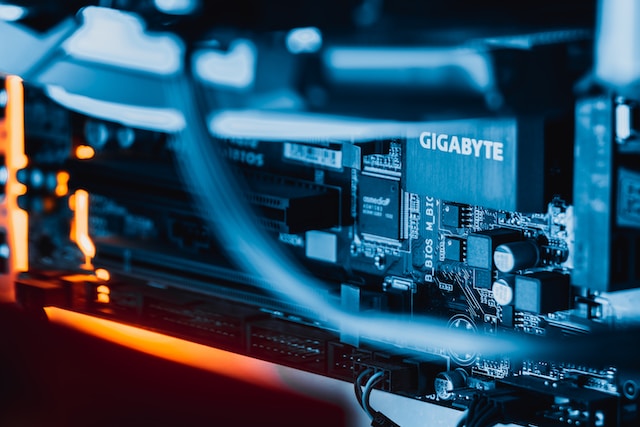Traveling by air has become a common mode of transportation for millions worldwide, offering the fastest way to traverse long distances. However, despite its convenience and efficiency, air travel is not without its challenges. One such challenge that can turn a routine flight into a harrowing experience is turbulence. This article delves into the phenomenon of severe turbulence, with a focus on a JetBlue flight that encountered unexpected and severe turbulence, providing insights into what causes turbulence, how airlines handle these situations, and tips for passengers to stay safe.
Understanding Turbulence: More Than Just Bumpy Air
Turbulence is often described as the sudden, unpredictable movement of air that affects aircraft. It ranges from mild disturbances that barely shake your drink to severe jolts that can toss unbuckled passengers and crew around the cabin. But what causes turbulence? At its core, turbulence is caused by different air masses colliding or moving at different speeds. This can be due to weather patterns, jet streams, air around mountains, or even the wake of another aircraft.
The JetBlue Incident: A Case Study
One notable incident involved a JetBlue flight that experienced severe turbulence en route. The aircraft encountered unexpected weather conditions that led to significant altitude changes and injuries among those not securely fastened. This event serves as a stark reminder of the power of nature and the importance of safety protocols.
How Airlines Prepare for Turbulence
Airlines, including JetBlue, invest heavily in training and technology to minimize the impact of turbulence. Pilots receive extensive training on navigating through rough air, and modern aircraft are equipped with radar systems that help detect turbulence from miles away. Despite these precautions, nature’s unpredictability means turbulence can still catch even the most experienced pilots by surprise.

Safety First: The Role of Passengers
While airlines do their utmost to ensure a smooth journey, passengers play a crucial role in their safety. Adhering to safety instructions, especially about seatbelts, is paramount. The JetBlue incident underscores the importance of always keeping your seatbelt fastened, even when the seatbelt sign is off, as turbulence can occur without warning.
Mitigating the Effects of Turbulence
Beyond seatbelt use, there are other ways passengers can reduce the risk of injury during turbulence:
- Stay seated: Unless absolutely necessary, try to remain in your seat with your seatbelt fastened.
- Store carry-on items properly: Loose items can become projectiles during severe turbulence. Ensure they are securely stowed away.
- Listen to the crew: Flight attendants are trained to handle turbulence. Following their instructions is crucial for your safety.
Psychological Impact of Turbulence
It’s not just the physical jolts; the psychological impact of experiencing severe turbulence can be profound. Anxiety and fear of flying can be exacerbated by such incidents. Airlines and crew members are aware of this and often provide reassurance and support to affected passengers.
Technological Advances in Turbulence Detection
The aviation industry continuously seeks ways to better predict and navigate turbulence. Innovations in satellite technology and improvements in predictive algorithms are gradually reducing the occurrence of unexpected turbulent episodes. These advancements offer hope for smoother skies ahead.

Learning from Incidents
Each incident of severe turbulence, like the one experienced by the JetBlue flight, provides valuable data for researchers and engineers. Analyzing these events helps improve safety protocols and training, ensuring that future flights are safer for everyone onboard.
The Importance of Communication
Clear and timely communication from the cockpit and cabin crew can significantly reduce passengers’ stress during turbulence. Knowing what to expect and that the crew is in control provides reassurance during unsettling moments.
Conclusion: Safety in the Skies
The incident involving severe turbulence on a JetBlue flight serves as a reminder of the unpredictability of air travel. While turbulence is an inherent part of flying, understanding its causes, how airlines prepare for it, and what passengers can do to ensure their safety, helps demystify this common phenomenon. Advances in technology and ongoing research promise to make air travel safer and more comfortable. However, the key takeaway remains: always listen to the safety briefing, keep your seatbelt fastened, and trust in the expertise of the flight crew to navigate you safely through the skies.

Navigating the Future
As we look to the future, the aviation industry’s commitment to safety and innovation stands as a beacon of hope. The skies may be unpredictable, but our resolve to conquer its challenges remains unwavering. With each flight, we learn, adapt, and move forward, ensuring that the miracle of flight continues to connect and inspire us all.
This comprehensive overview of dealing with severe turbulence, especially concerning a JetBlue flight, highlights the multifaceted approach required to ensure passenger safety and the ongoing efforts to improve air travel. By staying informed and prepared, passengers and crew alike can navigate the unpredictable nature of air travel with confidence and security.
How to Stay Healthy After 60
Blue WhatsApp Pros and Cons [Download Updated]
15 Tips for a Successful Marriage
4×4 Electric Utility Vehicle: The Ultimate Guide
Fidelity National Financial Cyber Attack: An In-Depth Analysis
A Beginner’s Guide to Voxias Internet
Southern Alternative: Exploring Unconventional Side of the South
Coinmv Unpacking the Cryptocurrency Exchange Shrouded in Mystery
Zooqle A Journey Through the Torrenting Landscape
Is 1950s Mens Fashion Rock Roll Still Relevant Today?















